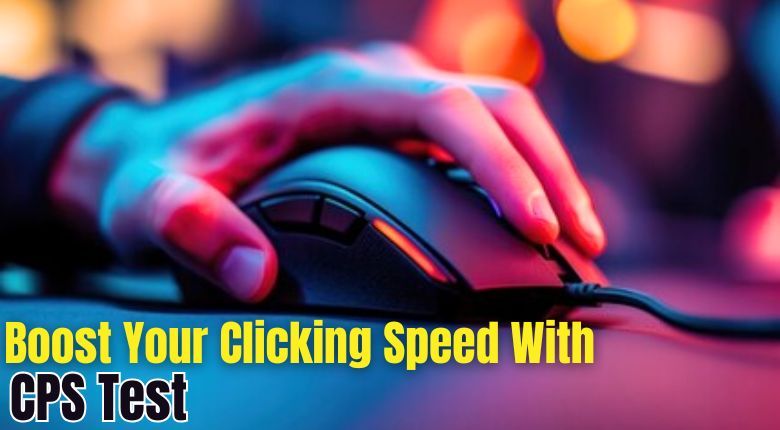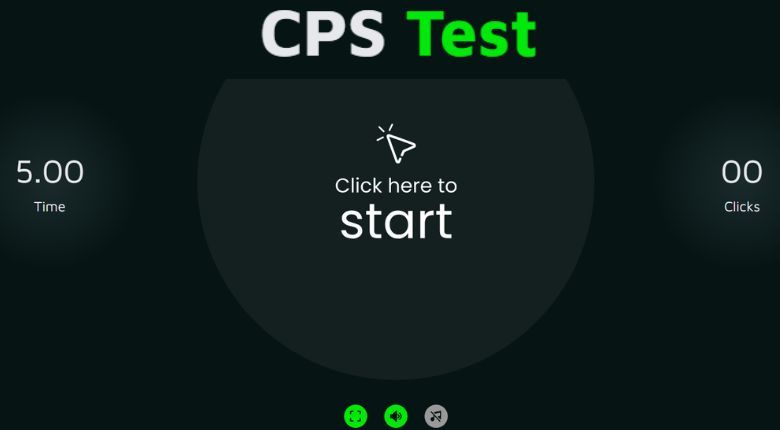Boost Your Clicking Speed with the Click Speed Test (CPS Test)
The Click Speed Test, also known as the CPS Test (Clicks Per Second), is a simple yet engaging tool that measures how fast you can click in a given time frame. Whether you're a gamer or just want to challenge your reflexes, the CPS Test is perfect for improving your speed and precision. It calculates your average clicks per second and helps you track your performance over time. This test is easy to use, browser-based, and free. Try the CPS Test now and see how many clicks you can achieve in just a few seconds!
What is the CPS Test?
The CPS Test (Clicks Per Second) is a tool or game designed to measure how many mouse clicks a user can perform in a specific time frame, usually measured over one second. The test gauges a user's clicking speed and is often used in online gaming communities for fun challenges or to improve one's reflexes and mouse-handling skills.
Definition and Purpose of CPS (Clicks Per Second) Testing
The CPS Test tracks how often you can click a mouse button within an exact time limit (e.g., 1 second, 5 seconds, 10 seconds, etc.). The primary purpose is to assess your click speed. While this may seem trivial, it has applications in competitive gaming, where fast clicking or rapid response times can be crucial for success.
How Does It Work?
The CPS test is straightforward. Here's how it typically functions:
Timer Start: You begin by clicking the "Start" button on a CPS testing website or application.
Clicking Period: For the set period (e.g., 5 or 10 seconds), click the mouse button as fast as possible.
End of Test: Once the time is up, the total number of clicks is recorded and divided by the number of seconds in the test.
End of Test: The score is displayed as clicks per second (CPS).
Features of CPS Test
Different Time Modes
Varied Time Durations: Click Speed Tests offer multiple time modes such as 5 seconds, 10 seconds, 30 seconds, and even longer durations like 60 seconds or more. These different time modes allow users to test their clicking speed under various time constraints, offering flexibility and different challenge levels.
Single-Click vs. Double-Click Modes
Single-Click Mode: The standard mode where users click once per action, focusing on raw speed and agility.
Double-Click Mode: In games or software that demand quick double-click reactions, this mode measures users' ability to perform double clicks—that is, to press the mouse button twice quickly.
Real-Time CPS Counter
A real-time counter updates dynamically while you click, showing your current Clicks Per Second (CPS) during the test. This feature helps users monitor their performance as they click and adjust their speed or strategy in real time.
Personal Best Tracking
Many click speed tests include a personal best tracking feature that records your highest CPS score over multiple attempts. It allows users to monitor their progress and compete against their records.
Global Leaderboards
Competitive platforms often feature global leaderboards where users worldwide can see how their CPS scores stack up against others. This creates a competitive environment, motivating users to improve their performance and aim for higher rankings.
Why Play CPS TEST?
The CPS Test (Clicks Per Second Test) is a fun and competitive way to measure how fast you can click within a set period. It is trendy in gaming communities and offers a variety of benefits beyond gaming.
How Is It Helpful?
Improves Reflexes and Hand-Eye Coordination:
By regularly testing and improving your CPS, you develop faster reflexes, which can improve your reaction time in games and other tasks.
Hand-eye coordination improves as you train yourself to click accurately and quickly in response to visual cues.
Boosts Gaming Skills:
Competitive games often demand quick reactions and high precision. Improving your CPS helps you respond faster, giving you a tactical advantage in many games.
Increases Finger Dexterity and Muscle Memory:
Regular CPS testing strengthens the muscles in your fingers, wrists, and forearms, improving agility. This can be beneficial in tasks requiring fast and repetitive clicking, like specific computer programs or tasks.
In competitive gaming, Clicks Per Second (CPS) plays a significant role in games that require fast reflexes and precise inputs. While not all games prioritize high CPS, specific genres, such as PvP (Player vs. Player) games, FPS (First-Person Shooters), and MOBAs (Multiplayer Online Battle Arenas), reward players who can click quickly and accurately.
CPS in Competitive Gaming
In competitive gaming, Clicks Per Second (CPS) plays a significant role in games that require fast reflexes and precise inputs. While not all games prioritize high CPS, specific genres, such as PvP (Player vs. Player) games, FPS (First-Person Shooters), and MOBAs (Multiplayer Online Battle Arenas), reward players who can click quickly and accurately.
Role of CPS in Esports
Faster Reaction Times
High CPS can give players a competitive edge by allowing them to input commands faster than their opponents, leading to quicker attacks, better defense, and more precise movement.
In games like Minecraft, Fortnite, or Counter-Strike, fast clicking is critical during intense combat or fast-paced building moments.
Improved Combat Skills
In PvP games, especially in Minecraft or similar titles, players with higher CPS have a direct advantage in combat scenarios. This includes faster melee attacks, quick combo execution, and rapid block placement.
Precise Micromanagement
In real-time strategy (RTS) games like StarCraft II, fast clicking helps players micromanage units and resources more effectively, improving their overall efficiency.
MOBA players like those in Dota 2 or League of Legends benefit from high CPS in fast movements, quick ability activations, and rapid targeting of enemies or objectives.
Building Speed
In Fortnite, high CPS allows players to build structures quickly during high-pressure moments, giving them a strategic advantage over slower opponents.
Made in Typedream


